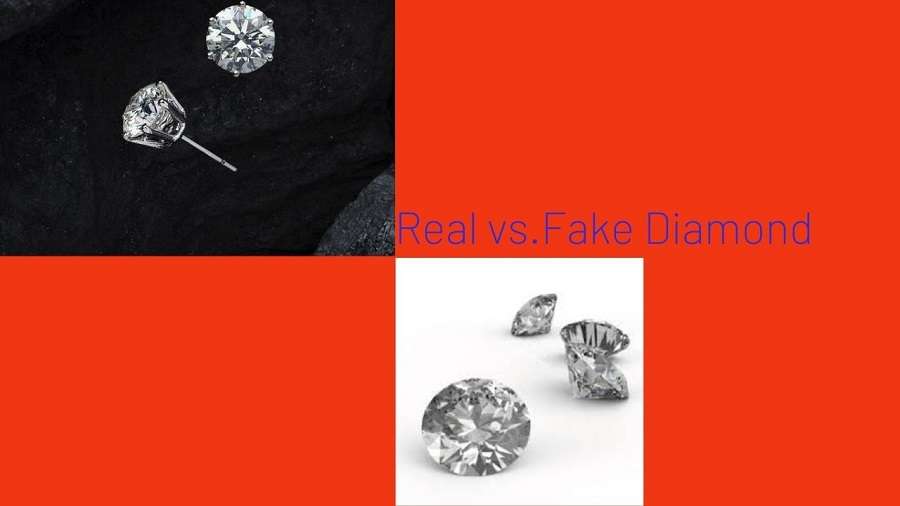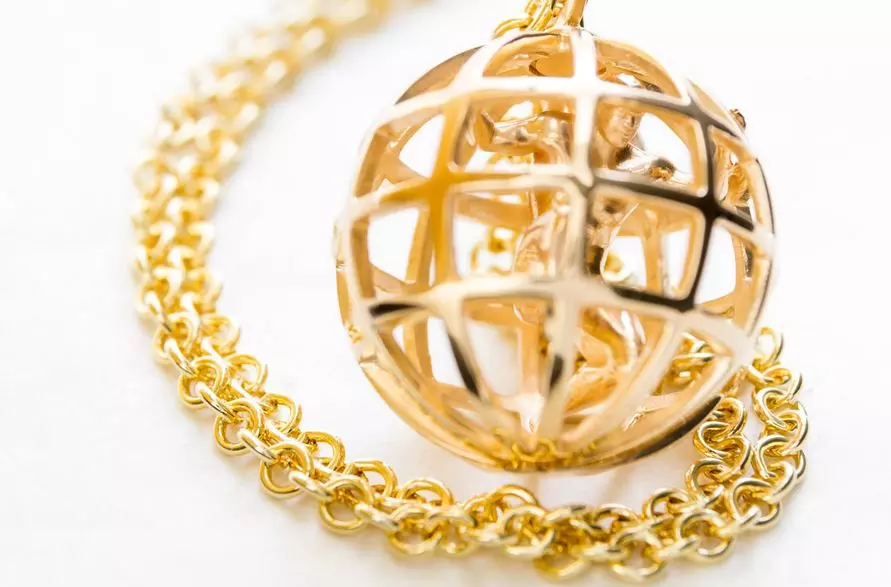It’s known that there are a variety of diamond alternatives on the market, some of which have some value, but many don’t. So it is crucial to understand the distinction between real and fake diamonds.
To see if it’s real or not, an easy trick would be to place your diamond in front of your lips and blow into it to see if it’s real or not. It’s real if it clears up after a second or two, but it’s a fake if it stays fogged for three seconds or more.
Diamonds are known to distribute heat instantly, preventing fogging. Check to see if your diamond is clean and free of oils before attempting this test.
How to Authenticate Real Diamonds Step by Step
See also: Diamond certificate of authenticity: Which diamond certification is best?
In this section, I will be laying out several tests that you can easily run to verify the quality of your diamond.
Test with a scratch.
This experiment is premised on the fact that diamonds are among the world’s toughest materials, allowing them to cut through glass. This test should show whether or not your diamond is genuine. All you’ll need is a glass plate and your diamond.
Procedure
Place the glass on a platform and use your diamond to scrape its surface. There’s a strong probability your diamond is genuine if you suffer a scratch. If you don’t, it’s a forgery.
It should be noted, nevertheless, that this procedure may cause harm to the glass. It’s also not one of the most accurate ways to determine the quality of your stone since so many different gems could produce similar findings.
Transparency Test
You’ll need to have a magazine or large print for this exam, as well as a sparkling diamond. In a portion of the magazine, place your diamond face down, pavilion up. If you can see the letter through the diamond, it’s most likely a phony. If the letters are hazy, you may be dealing with a genuine diamond.
Scaling and comparing the diamond
It’s important to understand that the tools used to scale a diamond aren’t everyday items. As a result, it is recommended that you take it to your local diamond jeweler to have it measured.
In a scenario where the stone weighs more than a genuine diamond of the same size and shape, you can be sure it’s a fake. The reason for this is that zirconia, a synthetic material, weighs about 55% more than a natural diamond.
You can compare the recorded weight to your diamond if it is certified or has a grading report. You’ll have to provide two stones of the same shape and size, one of which you know is genuine, to perform this test appropriately.
The Dot Test
This is a white-paper-based version of the transparency exam. Draw a tiny line on your piece of paper with a pen on a flat surface. Then, with the flat side facing up, place your diamond on the dot.
From the jagged edge of the diamond, look down onto the paper. It’s a fake if you can see the circle’s reflection inside the stone. You have a true diamond if you can’t see the reflection in the stone. The refractive properties of diamonds are excellent. Instead of a straight line, light bounces around it in various ways.
Heating
Diamonds are heat resistant due to their extremely robust material composition. The “heat test” is another name for this approach. To execute this test, you’ll need a glass of cold water, a pair of player or fireproof gloves, and a lighter.
Before immersing the test stone in the very cold water, heat it for about 40 seconds.If the stone fractures, it is a fake, since real diamonds would not behave in this way. This procedure demonstrates the stone’s durability and quality.
How to tell a real diamond by the eye
Sometimes you only have your smartphone and your diamond with you at the time. You’ll be OK as long as your phone has a torch. With a flashlight, you can probably tell if a diamond ring is genuine.
This test is easy since, to run it effectively, all you need is your eyes for this quick and painless exam. It’s also worth noting that a diamond reflects light well, resulting in dazzling sparkles. Simply hold your diamond up to a standard bulb and look at how brightly it sparkles and shimmers.
What is the real diamond sparkle vs. fake?
Diamonds have a unique way of refracting light. A genuine diamond’s interior should be gray and white, while its exterior should reflect a spectrum of colors. A counterfeit diamond will have rainbow colors inside it that you can see. Both the rainbow colors and the white light will be reflected by a real diamond. If you only get one, the diamond is indeed not genuine.
How to test a diamond with water
This method is arguably one of the simplest methods for determining whether or not your diamond is real, but it is not conclusive. Gently fill a glass with water and place your stone in it.
Because of the density of the stone, if the diamond is real, it will fall to the bottom of the glass. Assuming this was a fake, it’ll float on the surface of the water. Regrettably, not all imitation diamonds float in water, so you’ll have to try one of the other methods.
What does a real diamond look like in sunlight?
A diamond acts as a prism in intense sunshine, reflecting rainbows all around you. Scintillation is the pattern and contrast of bright and dark areas in a diamond, as well as light spots that flash as the diamond moves.
The diamond’s shine is caused by scintillation, which changes as the diamond moves. When light strikes a diamond, it slows to 77,000 miles per second. That’s a difference of more than 100,000 miles per second compared to flying.
As a result of the speed differential, light bends into rainbows of color and bursts of brilliance. Because diamonds reflect the surroundings around them, they glitter differently in sunlight than in candlelight or daylight in office lighting. You’ll notice a reflection of objects around you as you glance at your diamond.
How to tell if a diamond is real with a flashlight.
Hold the flashlight vertically with the beam shooting up and place the stone upside down on the lens to see if it’s a true diamond.
Assess how the flashlights travel through the stone. Because diamond has a high refractive index, white light entering the substance is divided into component colors before exiting.
It’s advisable to utilize a comparison stone-like CZ or glass that you know is fake for this procedure. With the use of a flashlight, you can identify if a diamond is real if it properly separates light into spectrum colors, whereas the fake comparative stone will not.
How to tell if diamonds are real without a tester
Aside from employing the use of a tester, there are a variety of alternative methods for determining whether or not a diamond is genuine. Place the flat side of the stone on the dot. Look down on the paper through the diamond’s pointed end.
If you notice that the gemstone has a circular reflection inside it, it is a fake. The diamond is real if you can’t see the dot or a reflection in the stone. Light will bounce in many directions instead of a straight line because a genuine diamond has significant refractive properties. Genuine diamonds will not allow you to see letters or dots.
How to tell if a diamond is real with a mirror
This testing technique is very simple. The stone was scraped across a mirror to see if it scratched the mirror or the stone. Although a diamond is made of incredibly strong components, imitations such as cubic zirconia and moissanite are extremely durable and scratch-resistant. As a result, the mirror test isn’t reliable.





